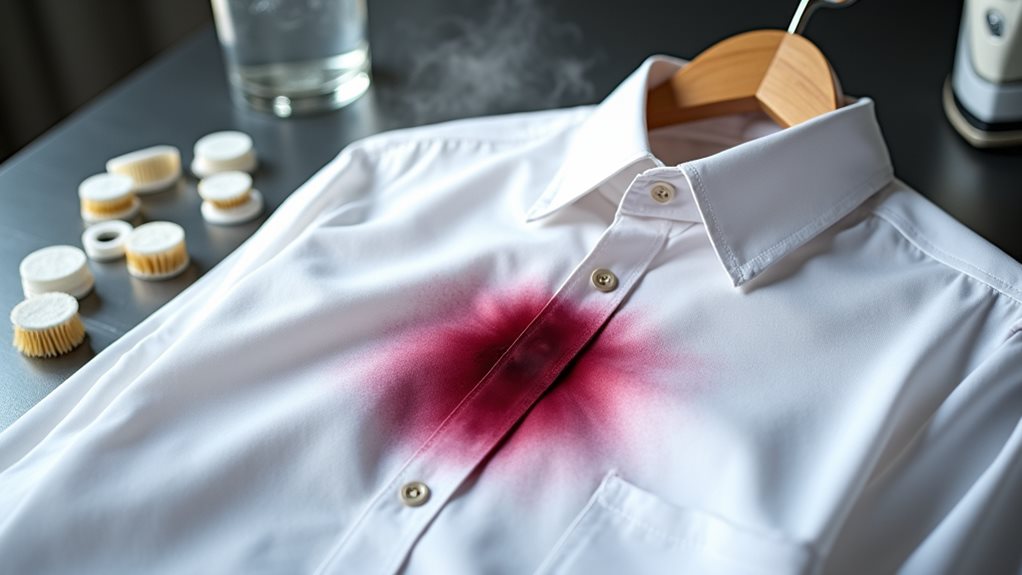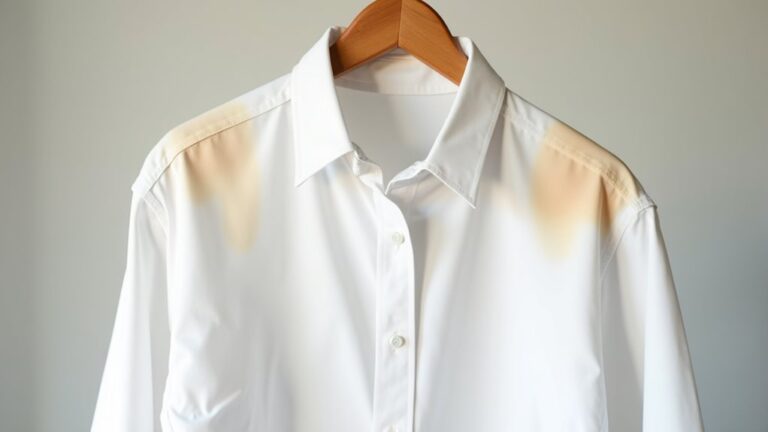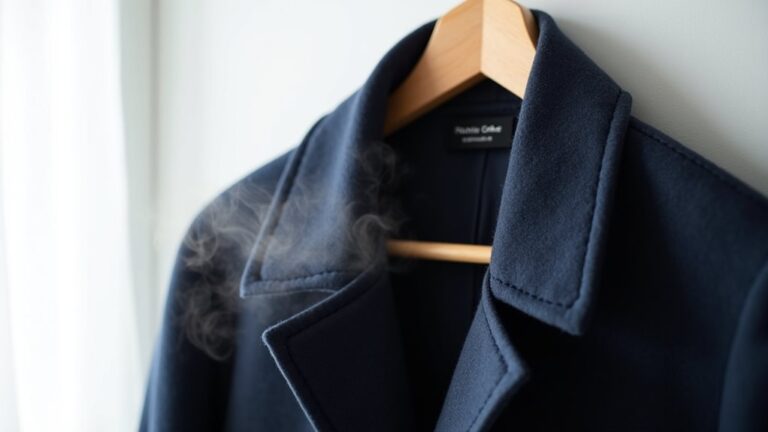Yes, dry cleaning can remove many stubborn stains that regular washing can’t tackle, especially oil-based stains from makeup or cooking, protein stains from sweat, and tannin stains from wine or coffee. The specialized solvents like perchloroethylene work at the molecular level to dissolve what water-based detergents leave behind. However, your success depends on acting quickly—I’ve learned the hard way that waiting too long can make stains permanent, and there’s so much more to contemplate about timing and technique.
How Dry Cleaning Works to Remove Stains
Although most of us think cleaning means soap and water, dry cleaning actually works through a completely different process that I’ve found fascinating ever since I accidentally spilled olive oil on my favorite silk blouse years ago.
Your professional dry cleaner uses specialized solvents like perchloroethylene instead of water, which penetrate deep into fabric fibers to remove stains at the molecular level.
Professional dry cleaners utilize specialized chemical solvents that penetrate fabric fibers deeply, removing stubborn stains at the molecular level without using water.
These cleaning agents excel at dissolving oil-based stains that regular washing can’t touch, while enzyme-based solutions tackle protein-based stains from sweat or blood.
When you’re dealing with stains caused by tannins like red wine, specific solvents neutralize them completely.
This gentle process protects delicate fabrics from shrinkage and damage, making stain removal both effective and safe.
However, the success of dry cleaning depends on several factors including the stain type, how long it has set into the fabric, and the specific material being treated.
Types of Stains Dry Cleaning Can Effectively Remove
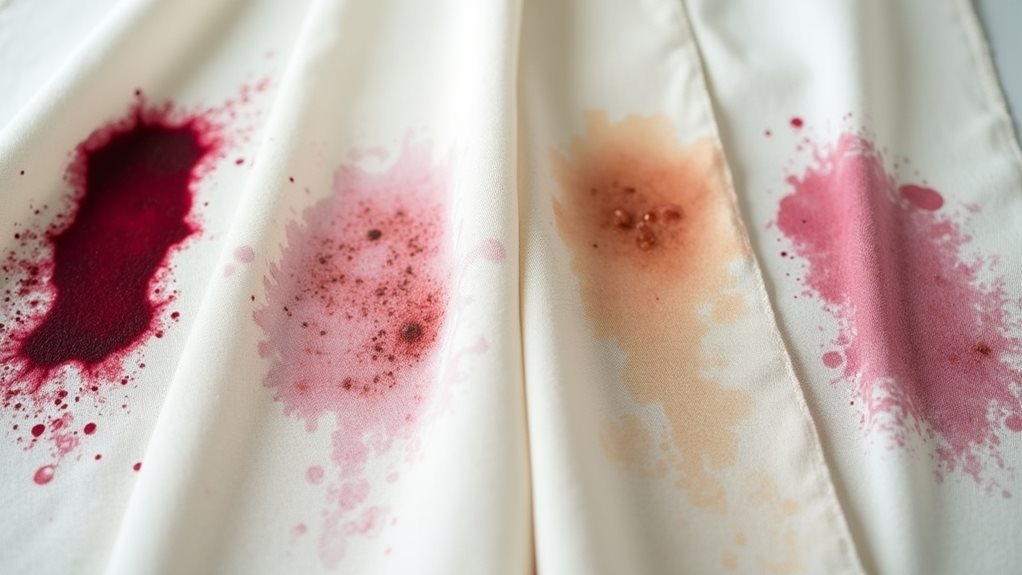
Understanding how dry cleaning works opens up a world of possibilities when you’re standing in your closet, staring at that stubborn stain and wondering if there’s any hope left for your favorite garment.
Professional cleaners can tackle oil-based stains from cooking mishaps or makeup accidents using specialized solvents that dissolve greasy residues without harming delicate fabrics.
Those protein-based stains from sweat or blood? Enzyme solutions break them down completely.
Tannin stains from your morning coffee disaster or that wine spill from last night’s dinner party respond beautifully to dry cleaning solvents that neutralize plant-based compounds.
Even tricky dye stains from ink explosions and combination stains from complex spills get effective removal through targeted treatments that preserve your garment’s original beauty.
The chemical solvents used in dry cleaning, such as perchloroethylene or newer eco-friendly alternatives, are specifically designed to dissolve oils and grease that traditional water-based washing simply cannot handle.
Benefits of Professional Stain Removal Vs Home Treatment
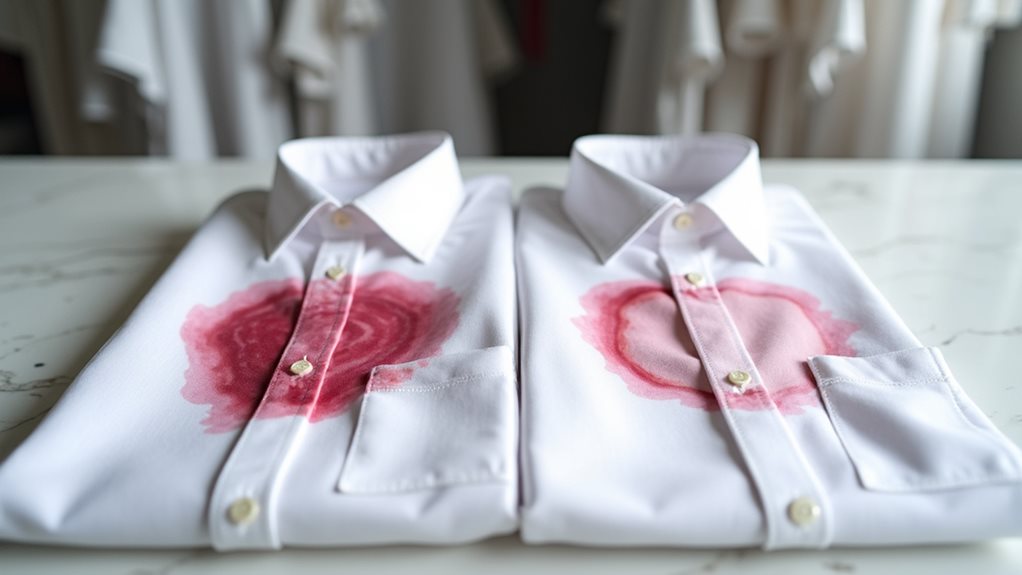
When you’re faced with a stubborn stain, that moment of panic hits and you’re tempted to grab whatever’s under your kitchen sink and start scrubbing away like your life depends on it.
Here’s the truth though – professional stain removal beats home treatment almost every time, especially when dealing with oil stains or set-in stains that’ve been laughing at your efforts for weeks.
Professional cleaning methods use specialized solvents and enzymes that can tackle what your dish soap simply can’t, particularly on delicate fabrics where aggressive scrubbing might cause more damage than the original stain.
While home treatments work for fresh spills, effective stain removal often requires expertise and proper garment care that only professionals can provide.
Unlike water-based washing, dry cleaning uses chemical solvents that can effectively eliminate oil-based stains and odors without causing shrinkage or color bleeding.
When to Choose Dry Cleaning Over DIY Stain Removal
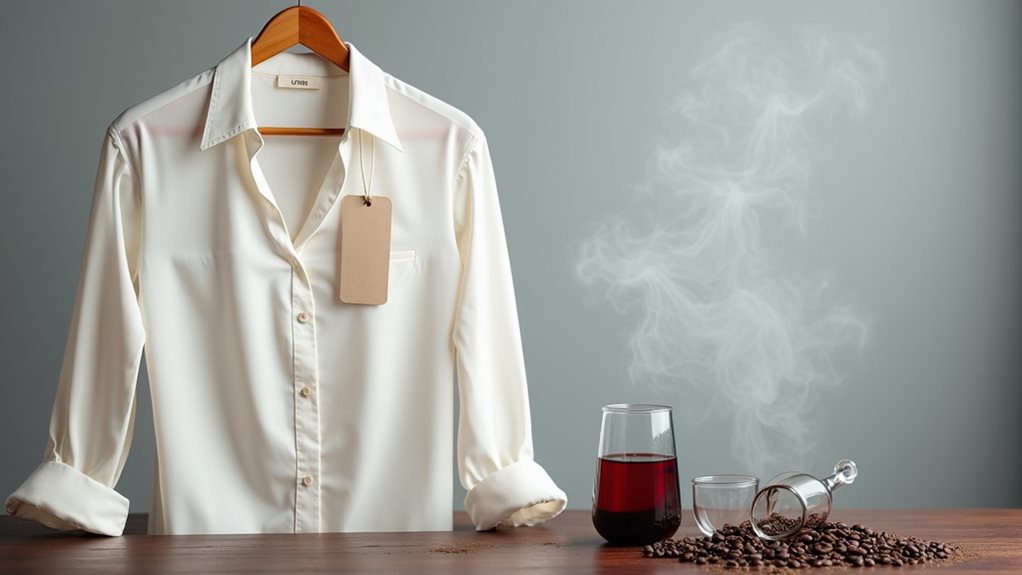
While I’ve learned this lesson the hard way after ruining more clothes than I care to admit, there’s a clear line between what you should tackle at home and what deserves professional attention.
Here’s when you should skip the home remedies and head straight to dry cleaning:
- Tough stains like oil stains, wine, or ink – These stubborn marks require specialized solvents that your kitchen cabinet simply can’t provide.
- Delicate fabrics or embellished pieces – Silk blouses and beaded dresses need gentle, professional handling during the cleaning process.
- Set-in or old stains – Once stains bond with fibers, professional stain removal techniques become crucial.
- Protein-based stains from sweat or blood – Dry cleaning uses powerful enzyme treatments that safely break down proteins without damaging fabric.
Additionally, dry cleaning excels at removing oil-based stains, grease, and certain types of makeup that water-based cleaning cannot effectively eliminate.
Trust me, investing in professional care beats replacing ruined garments!
Limitations of Dry Cleaning for Certain Stains
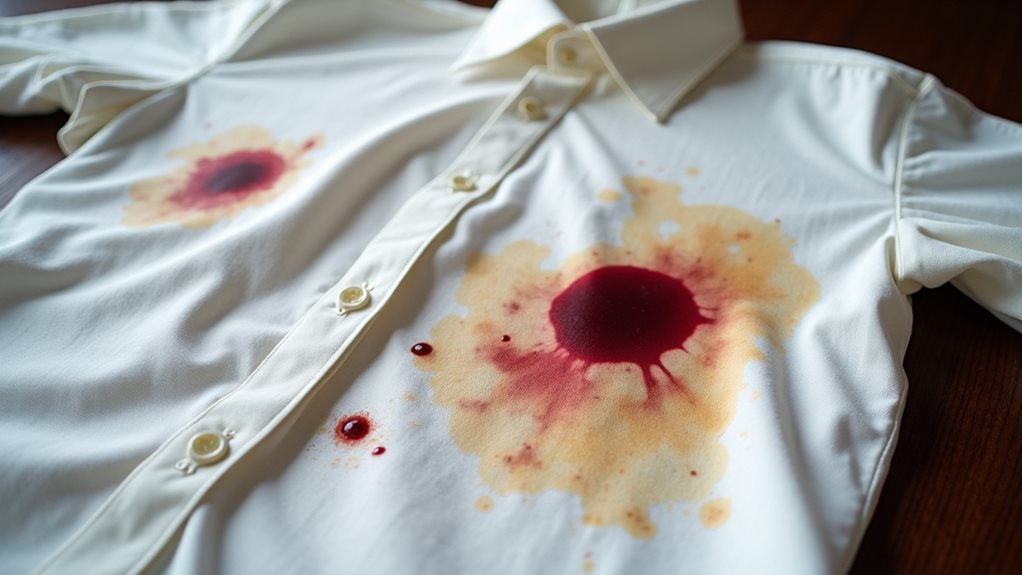
Despite my enthusiasm for professional cleaning services, I’ve learned through some disappointing experiences that even the best dry cleaners can’t work miracles on every stain that walks through their door.
The limitations of dry cleaning became painfully clear when I brought in my grandmother’s silk blouse with a year-old wine stain – sometimes old stains bond so deeply with fibers that removing the stain becomes impossible without damaging the fabric completely.
Professional dry cleaning must balance aggressive treatment with preserving fabric integrity, especially with delicate fabrics that can’t withstand harsh chemicals.
While dry cleaning can tackle many fresh stains effectively, stains that dry cleaning struggles with are often set-in marks that require choosing between stains are often lightened rather than eliminated.
Sweat stains present a particular challenge since dry cleaning uses chemical solvents rather than water, making it less effective against the water-soluble components found in perspiration.
Tips for Better Stain Removal Results at Dry Cleaners
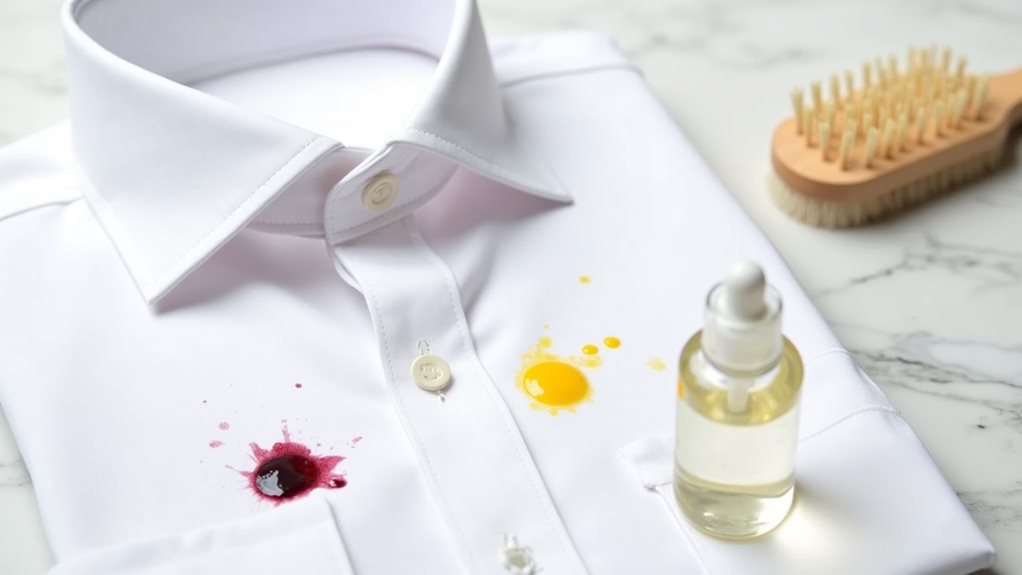
You can dramatically improve your chances of getting that stubborn stain out by taking action immediately, because I’ve learned the hard way that waiting even a day can turn a simple coffee spill into a permanent fabric tattoo 😅.
When you rush to the dry cleaner, don’t just drop off your garment and hope for the best—instead, share every detail you can remember about what caused the stain, when it happened, and what fabric you’re dealing with, since this information acts like a roadmap for the cleaning professionals.
Most importantly, resist the urge to toss that stained item in the dryer or leave it crumpled in a hot car, because heat becomes your stain’s best friend and your wallet’s worst enemy.
Keep in mind that dry cleaning excels at removing oil-based stains like grease and makeup, but water-soluble stains such as sweat or blood may require additional specialized treatments that your cleaner can discuss with you.
Act Quickly Always
When my favorite silk blouse met an unfortunate encounter with marinara sauce at last month’s family dinner, I learned firsthand that time truly becomes your greatest ally in the battle against stubborn stains.
Acting quickly transforms what could’ve been a garment’s death sentence into a successful dry cleaning victory story.
Here’s why speed matters so much for effective stain removal:
- Fresh stains haven’t bonded with fabric fibers yet – making them easier for professionals to extract
- You’ll remember exactly what caused the stain – vital details that help dry cleaners choose the right treatment
- Heat from dryers won’t have time to set the damage – preserving your chances for complete removal
- Every minute counts – delaying treatment gives stain molecules more time to penetrate deeper into fabric
The effectiveness of stain removal also depends on whether dry cleaners can apply pre-treatment techniques or specialized methods before the main cleaning process begins.
Don’t let procrastination cost you your favorite pieces!
Provide Stain Details
Communication becomes your secret weapon in the dry cleaning battle, and I discovered this truth the hard way after watching my dry cleaner struggle with a mysterious spot on my daughter’s prom dress that I’d vaguely described as “something brownish.”
The more specific details you provide about your stain’s origin, timing, and any previous treatment attempts, the better equipped your dry cleaner becomes to wage an effective war against those stubborn marks.
When you provide stain details, mention exactly what caused it—wine, chocolate, or grease—because different types of stains require specialized approaches.
Don’t forget to identify your fabric type, especially with delicate fabrics like silk or wool, since professional treatment methods vary dramatically.
Time also plays a crucial role in stain removal success, as set-in stains that have been exposed to heat or allowed to age become significantly more challenging for even the most skilled dry cleaning professionals to eliminate completely.
Avoid Heat Setting
Although I learned this lesson after ruining my favorite cashmere sweater with a coffee stain, heat becomes your stain’s best friend and your garment’s worst enemy, transforming what could’ve been a simple dry cleaning success story into a permanent reminder of that clumsy Tuesday morning.
Here’s how to avoid heat setting and give your delicate fabrics the best chance at effective removal:
- Skip the dryer completely – heat exposure turns temporary stains into permanent souvenirs that even professional treatment can’t fix 😅
- Use cold water only when pre-treating, especially for removing oil stains that love to bond under heat.
- Communicate immediately with your dry cleaner about any stains before they begin their process.
- Act fast because set-in stains become nearly impossible challenges that’ll break your heart.
Your quick thinking prevents those “what if” moments later.
When discussing stain removal with your dry cleaner, consider asking about eco-friendly solvents as alternatives to traditional chemical treatments that may be gentler on both your garments and your health.

